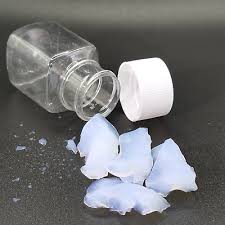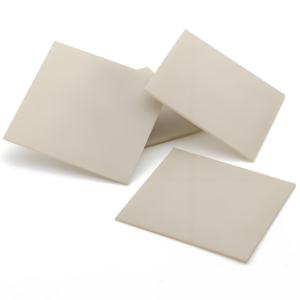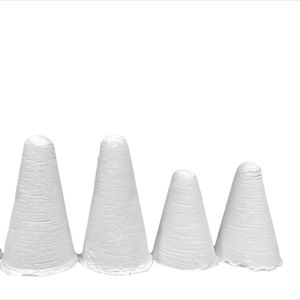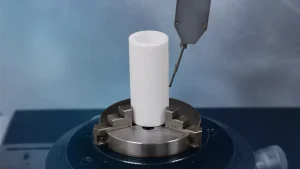Professional industry ceramic supplier, silicon nitride, silicon carbide, aluminum nitride and any other kinds of ceramics.
1. Introduction
When you think of cutting-edge technology, your mind might jump to sleek smartphones, AI chips, or electric vehicles—but behind every one of these innovations lies an unsung hero: the silicon carbide crucible. While most people associate crucibles with ancient metallurgy or basic lab experiments, in today’s high-tech industries, they’re engineered to near-perfection for one of the most demanding tasks on Earth: growing ultra-pure silicon crystals for semiconductors. This isn’t just any container—it’s a precision vessel that must withstand temperatures above 1,500°C while resisting chemical attack, thermal shock, and contamination. And in this arena, silicon carbide reigns supreme.

2. The Crucial Role of Crucibles in Semiconductor Crystal Growth
Monocrystalline silicon—the backbone of integrated circuits—is grown using methods like the Czochralski (CZ) process, where high-purity polysilicon is melted in a crucible and a seed crystal is slowly pulled to form a single-crystal ingot. Any impurity introduced during this process can ruin the entire batch, leading to defective chips. That’s why the crucible material must be chemically inert, thermally stable, and mechanically robust. Traditional ceramic crucibles made from alumina (Al2O3) or zirconia (ZrO2) often fall short under these extreme conditions, leaching oxygen or metal ions into the melt. Enter the silicon carbide crucible—a game-changer for high-purity applications.

3. Why Silicon Carbide Outperforms Other Advanced Ceramics
Silicon carbide (SiC) is an advanced ceramic known for its exceptional hardness, thermal conductivity, and resistance to thermal shock. Unlike alumina crucibles, which can react with molten silicon at high temperatures, silicon carbide maintains structural integrity and minimizes contamination. Compared to zirconia crucibles—which are prone to phase instability and oxygen release—SiC offers superior chemical inertness in reducing atmospheres typical of crystal growth furnaces. Even when stacked against other high-performance materials like boron carbide vs silicon carbide, SiC wins in cost-effectiveness, manufacturability, and thermal cycling durability.
4. Real-World Application: Silicon Carbide Crucibles in CZ Furnaces
In commercial CZ pullers, silicon carbide crucibles are often used as outer support containers or as components in hybrid systems. While the inner melt container might be quartz (to avoid SiC contamination in ultra-pure zones), the structural and thermal management layers rely heavily on SiC. For instance, silicon carbide ceramic columns, silicon carbide ring supports, and even rbsic silicon carbide tile blocks are integrated into furnace hot zones to provide stability and uniform heat distribution. These components—alongside silicon carbide burner nozzles and silicon carbide brick linings—create a thermally efficient, contamination-controlled environment essential for defect-free crystal growth.
5. Beyond the Crucible: Complementary SiC and Si3N4 Components
The ecosystem around crystal growth doesn’t stop at the crucible. High-performance systems also incorporate silicon nitride ceramic parts—like silicon nitride rings, silicon nitride plates, and custom silicon nitride heat shields—thanks to their excellent thermal shock resistance and low thermal expansion. While a silicon nitride crucible factory might produce lab-scale vessels for niche research, silicon carbide remains the workhorse for industrial-scale operations. Meanwhile, high purity silicon nitride powder market developments continue to push the boundaries of what’s possible in auxiliary components, but SiC still dominates the core thermal structure.
6. Misconceptions and Market Noise
It’s worth noting that many online searches conflate silicon carbide with consumer ceramic goods—like silicon carbide ceramic dinner plates, silicon carbide baking dishes, or even silicon carbide ceramic butter dishes. While these kitchenware items may use SiC for its thermal properties, they’re unrelated to industrial crucibles. Similarly, queries about silicon carbide ceramic tiles, silicon carbide discs, or silicon carbide piping refer to entirely different applications in abrasives, filtration, or wear-resistant linings. The true value of the silicon carbide crucible lies not in aesthetics or cookware, but in its irreplaceable role in enabling the digital age.
7. Conclusion
From powering your laptop to enabling next-gen electric vehicles, the journey of a semiconductor begins in a crucible—and increasingly, that crucible is made of silicon carbide. Its unmatched combination of thermal stability, chemical resistance, and mechanical strength makes it indispensable in high-purity crystal growth, a niche yet foundational process in modern electronics. As chipmakers push toward smaller nodes and higher yields, the demand for advanced ceramic solutions like the silicon carbide crucible will only grow, proving that sometimes, the most critical innovations happen not on the screen—but in the furnace.
Our Website founded on October 17, 2012, is a high-tech enterprise committed to the research and development, production, processing, sales and technical services of ceramic relative materials such as Why. Our products includes but not limited to Boron Carbide Ceramic Products, Boron Nitride Ceramic Products, Silicon Carbide Ceramic Products, Silicon Nitride Ceramic Products, Zirconium Dioxide Ceramic Products, etc. If you are interested, please feel free to contact us.



